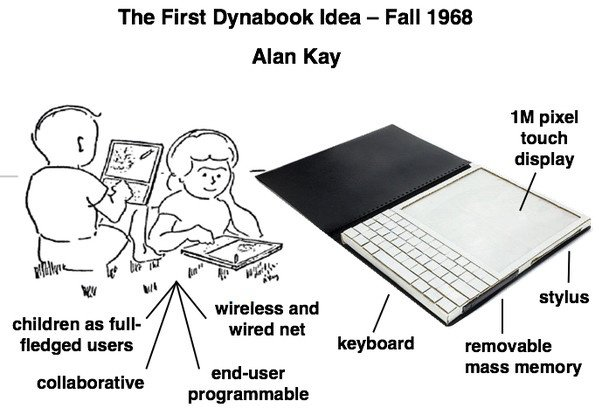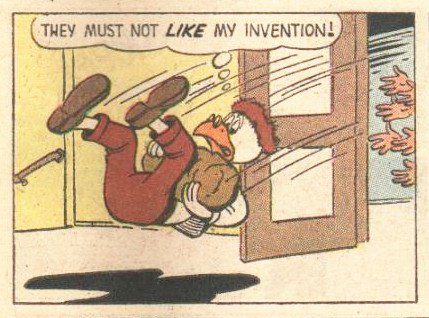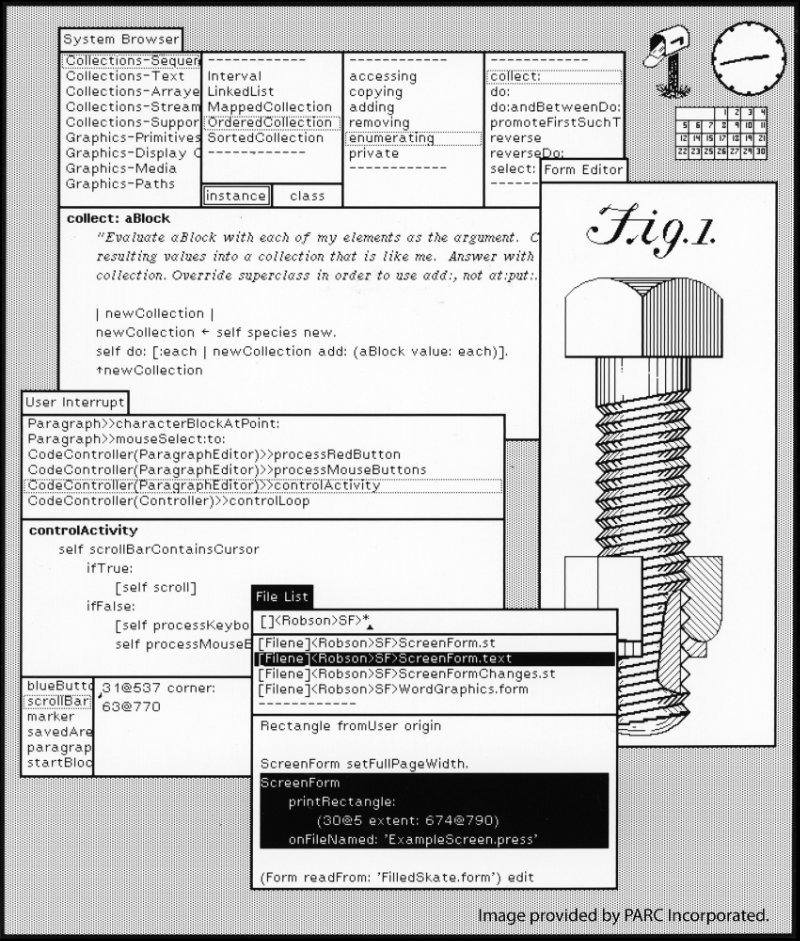I wrote this.
[Preview]
Who invented the modern computer look and feel?
- Vannevar Bush invented the Memex crowd thinking desktop environment with redundancy-merging hypertext wiki 1939–1945.

He had designed analog computers and founded the Manhattan Project that produced the first nuclear bomb.

Memex was to increase humanity’s collective wisdom enormously, comparable to the printing press revolution in science in the last few centuries.
“First do this,”

“then do that:”

“Massive progress in collaborative thinking!”
Memex as described by Bush in “As We May Think“
"enlarged intimate supplement to one's memory"
"mechanized so that it may be consulted with exceeding speed and flexibility"
"Wholly new forms of encyclopedias will appear, ready made with a mesh of associative trails running through them, ready to be dropped into the memex and there amplified."
"The inheritance from the master becomes, not only his additions to the world's record, but for his disciples the entire scaffolding by which they were erected."
(emphasis mine)
Memex remembers knowledge and its creation process to be immediately learned from and built upon. It self-organises, integrating added information to the common knowledge tree.
It was designed for crowd work on all human knowledge.
WWW does not remember - it works like a paper pile. You can’t see a mesh of associative trails running through WWW any more than through a paper pile. The mental scaffolding by which knowledge was erected is lost. You can’t drop a knowledge structure into WWW and expect any amplification to happen.
It was made for publishing, not processing.
Vannevar Bush squiggling alone in his outer brain about a shared outer brain:

He specified a desktop computer to host Memex,

and suggested a quaint working principle,

which nobody thought could possibly work.
John von Neumann replied:

“Konrad Zuse already made it from ones and zeros - it’s fast and precise. Let me show you how to make one.”
Bush replied “It’s hideous and boring! Twiddling knobs is so much gayer than pressing buttons!”

"I tweak this - that there resists. I let go - it returns under the force set by this slider. I flip this clutch - these three start arguing, and it’s all chaos! It wiggles! Then you tweak the adjusters until order emerges. The point is collaboration.”
“It doesn’t matter which way you swing the data. All computers are born equal, so ours isn’t any worse”, explains Alan Turing.

“Also, we were being bombed when we made it, and beat Nazi Germany with it.”
“What will the machine do? Nobody knows. Is it thinking? Who cares? If it quacks, it’s a duck.”, says Turing.

“We’re selling them too. Can you afford to be without?”
U.K. Government drove Turing to suicide for his taste in companions.
Meanwhile:

U.S. military chose von Neumann’s architecture and made SAGE air traffic control computer for Soviet Russian bombers.

Inside the computer, bits of electricity were beamed off of red hot metal wires all the way to the display, X-raying the user.
Outside the computer, workers parked their cars.

They wanted reliability, so a backup computer ran in the background, ready to take over.
Meanwhile:






- Ivan Sutherland liked the pointable display and invented interactive computer graphics.

“See, when I scale the main part, all the sub-parts inherit the change. Then I start the simulation and we’ll see if the chair can bear the weight. Easy as C-A-D.”
- Douglas Engelbart, who had been inspired by Memex, looked at the new computers and the state of Earth’s collective intelligence.
He had a worry:

“What if an unforeseen danger is about to hit us? Can we solve the problem quickly enough? Doubtful.”
He had a vision:

"We should use computers to boost mankind's capability for coping with complex, urgent problems."
He worked at ARPA IPTO with master craftsmen orchestrated by J. C. R. Licklider, Ivan Sutherland (the CAD guy), and Robert Taylor. In 1968 they launched “The Mother of All Demos” on the oN-Line System (NLS), a collaborative desktop environment.

Douglas Engelbart mousing around with other users’ pointers while typing on a 5-bit chord keyboard.

Talking about the structure of knowledge in a real-time collaborative-editing wiki.

Team of programmers wiggling the server’s logic graphs with their mice. No twiddle knobs, only unfeelable pictures under glass.
Internet, then ARPAnet, has been up since then - it may be the most reliable machine ever made.
Moments later:

- Alan Kay working at the same ARPA IPTO designed the handheld computer Dynabook 1968. (He writes on Quora.)


“The best way to predict the future is to invent it.”
Unimpressed, the U.S. Congress fired ARPA IPTO in 1972.

Earlier, over the decades where the congress representatives live:


The Principal contaminants in used oil are Aluminium Dichlorodifluoromethane, Benzene, Antimony Trichclorotrifluorethane, Toluene Arsenic, 1,1,1-Trichloroethane Xylenes, Barium Trichloroethylene, Chromium Polychlorinated biphenyls Other PAHs, Cobalt Sulphur, Copper Nitrogen, Lead, Magnesium, Manganese. Mercury, Nickel, Phosphorus, Silicon, Sulphur and Zinc.
http://www.materialsciencejournal.org/vol7no1/environmental-impacts-of-used-oil/



Luckily a rich company, Xerox, immediately grabbed the project. Whew!

At Xerox PARC Alan Kay (the Dynabook guy) made a user-programmable desktop development environment virtual machine Smalltalk on the first modern personal computer Xerox Alto (“interim Dynabook”) 1973.

Children loved its learnability.

Users loved its understandability: Transparent meanings all the way down to what makes it tick.
https://www.youtube.com/watch?v=AnrlSqtpOkw&t=157s
"Doing with images makes symbols!”
It was highly learnable, user editable, and crowd collaborable in an unlimited number of persistent, shared workspaces.
It was supposed to make everyone fluent in computers in the same way that Ford Model T with its complete manual for disassembly, maintenance, and repair had birthed a generation of Americans fluent in mechanics who then went on to win World War II, to the Moon, and higher up skyscrapers than ever.
“Learn this as a child:”

“Do this as an adult:”

“Let’s do the same with computers?”, suggests Alan Kay.
[End of preview]
As there is no import function to Lemmy from Quora, and copy-paste removes formatting and links, this is too tedious for me to rebuild here entirely. Go read the original. More about boring dystopia further down the article.
https://www.quora.com/Who-invented-the-modern-computer-look-and-feel/answer/Harri-K-Hiltunen
If you can't stand Quora, here's a copy with all videos broken and images scaled down, with scripts to "mail [dot] ru" for some reason according to NoScript in Firefox: https://archive.ph/4Ka2l The other archiving options offered didn't work.